Mapping of Functional Metabolic Phenotypes in Acute Myeloid Leukemia
- PMID: 40386930
- PMCID: PMC12086641
- DOI: 10.1002/cam4.70950
Mapping of Functional Metabolic Phenotypes in Acute Myeloid Leukemia
Abstract
Background: Acute myeloid leukemia (AML) is an aggressive hematologic malignancy with a poor prognosis, particularly in older patients. AML is highly heterogeneous, influenced by various chromosomal, genetic, and epigenetic alterations.
Methods: This study investigated the metabolic profiles of primary AML cells from 46 patients, focusing on mitochondrial respiration and glycolysis. We hypothesized that the metabolic profiles would reflect distinct disease characteristics. Using Seahorse technology, we measured the oxygen consumption rate (OCR) for mitochondrial respiration and the extracellular acidification rate (ECAR) for glycolysis.
Results: Our results showed significant variability in metabolic activity, with some samples relying more on glycolysis than mitochondrial respiration. Mature AML cells (FAB M4/M5, CD34 negative) exhibited increased rates of both mitochondrial respiration and glycolysis, indicating distinct metabolic adaptations. Higher glycolytic activity was observed in patients with adverse cytogenetic abnormalities. However, no clear associations were found between metabolic profiles and mutations in FLT3 or NPM1.
Conclusion: These findings highlight the role of metabolic variability in AML and suggest that targeting specific metabolic pathways could offer therapeutic opportunities, particularly for subgroups like FAB M4/M5 with unique metabolic features. Further studies are needed to refine these therapeutic strategies for clinical application.
Keywords: acute myeloid leukemias; glycolysis; metabolic phenotypes; metabolism.
© 2025 The Author(s). Cancer Medicine published by John Wiley & Sons Ltd.
Conflict of interest statement
H.R. has consulted Novartis and Glaxo Smith Kline. The other authors declare no conflicts of interest.
Figures
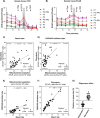

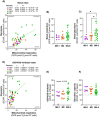
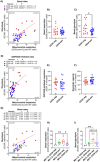
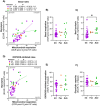

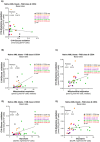
Similar articles
-
Monocytic Differentiation of Human Acute Myeloid Leukemia Cells: A Proteomic and Phosphoproteomic Comparison of FAB-M4/M5 Patients with and without Nucleophosmin 1 Mutations.Int J Mol Sci. 2024 May 7;25(10):5080. doi: 10.3390/ijms25105080. Int J Mol Sci. 2024. PMID: 38791118 Free PMC article.
-
Enhanced Expression of Glycolytic Enzymes and Succinate Dehydrogenase Complex Flavoprotein Subunit A by Mesothelin Promotes Glycolysis and Mitochondrial Respiration in Myeloblasts of Acute Myeloid Leukemia.Int J Mol Sci. 2024 Feb 10;25(4):2140. doi: 10.3390/ijms25042140. Int J Mol Sci. 2024. PMID: 38396817 Free PMC article.
-
Integrated genomic-metabolic classification of acute myeloid leukemia defines a subgroup with NPM1 and cohesin/DNA damage mutations.Leukemia. 2021 Oct;35(10):2813-2826. doi: 10.1038/s41375-021-01318-x. Epub 2021 Jun 30. Leukemia. 2021. PMID: 34193978 Free PMC article.
-
Nucleophosmin gene mutations in acute myeloid leukemia.Arch Pathol Lab Med. 2006 Nov;130(11):1687-92. doi: 10.5858/2006-130-1687-NGMIAM. Arch Pathol Lab Med. 2006. PMID: 17076533 Review.
-
Monocytic Differentiation in Acute Myeloid Leukemia Cells: Diagnostic Criteria, Biological Heterogeneity, Mitochondrial Metabolism, Resistance to and Induction by Targeted Therapies.Int J Mol Sci. 2024 Jun 8;25(12):6356. doi: 10.3390/ijms25126356. Int J Mol Sci. 2024. PMID: 38928061 Free PMC article. Review.
References
-
- DiNardo C. D., Erba H. P., Freeman S. D., and Wei A. H., “Acute Myeloid Leukaemia,” Lancet 401, no. 10393 (2023): 2073–2086. - PubMed
-
- Extermann M., Artz A., Rebollo M. A., et al., “Treating Acute Myelogenous Leukemia in Patients Aged 70 and Above: Recommendations From the International Society of Geriatric Oncology (SIOG),” Journal of Geriatric Oncology 15, no. 2 (2024): 101626. - PubMed
-
- Reikvam H., “Revisiting the Prognostic Role of FLT3 Mutations in Acute Myelogenous Leukemia,” Expert Review of Hematology 16, no. 5 (2023): 317–323. - PubMed
-
- Falini B., Martelli M. P., Brunetti L., Gjertsen B. T., and Andresen V., “The NPM1 Mutant Defines AML Irrespective of Blast Count,” American Journal of Hematology 98, no. 7 (2023): E187–E189. - PubMed
MeSH terms
Substances
Grants and funding
LinkOut - more resources
Full Text Sources
Medical
Miscellaneous

